Search the Special Collections and Archives Portal
Search Results
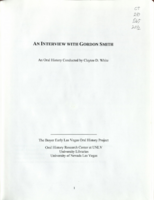
Transcript of interview with Gordon Smith by Claytee White, January 29, 2013
Date
Archival Collection
Description
Gordon Smith was born in Utah, but moved with his family to Babbitt, Nevada in 1947. His father, a barber, moved the family to Las Vegas in 1955. In this interview, Gordon recalls school and after-school pursuits; changes in the town; summer jobs; and college. He also talks about his military service and returning to Las Vegas to take up the razor himself - starting a successful barbering business of over 30 years.
Text
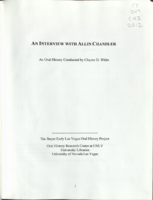
Transcript of interview with Allin Chandler by Claytee White, February 5, 2013
Date
Archival Collection
Description
Another member of Rancho High School's first graduating class of 1962, Allin Chandler charted a course that took him from school football to a distinguished career as a teacher, principal, and Executive Director for the Clark County Association of School Administrators. Allin moved to Las Vegas from Texarkana, Texas with his mother in 1958, joining his father who was serving in the Air Force and stationed at Nellis AFB. Starting 9th grade at J.D. Smith Junior High and continuing on to Rancho the following year. Still actively involved in school athletics, Allin quickly discovered his talent and love for maths and science and eventually earned his degree in math and education. The stories Allin shares in this interview paint a vivid picture of how an intelligent and motivated young man can succeed - and how the class-free world of Las Vegas in the 1950s and 60s offered opportunities that he would never have had in class-conscious world of the South.
Text
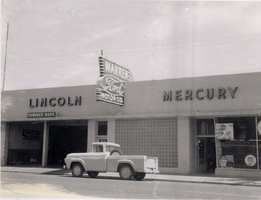
Warren Ford Motor Co mounted wall signs, Elko, Nevada: photographic print
Date
Archival Collection
Description
View of the Warren Ford Motor Co signs in Elko, NV during the day.
Image
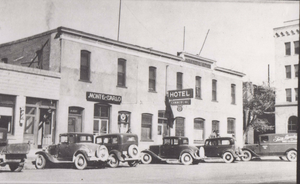
Commercial Hotel flag mounted wall sign and wall sign and Monte-Carlo sign, Elko, Nevada: photographic print
Date
Archival Collection
Description
View of the Commercial Hotel and the Monte-Carlo bar during the day.
Image
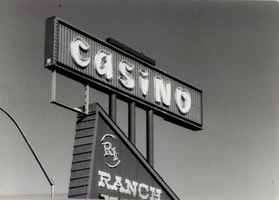
Unspecified roof mounted Casino sign, Elko, Nevada: photographic print
Date
Archival Collection
Description
View of a roof mounted sign for an unspecified casino during the day.
Image
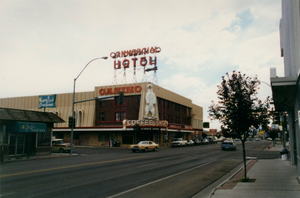
Commercial Hotel and Casino roof and wall mounted signs, Elko, Nevada: photographic print
Archival Collection
Description
View of the Commercial Hotel and Casino during the day. One image includes the moutning of one of the signs and another with the removal of an old sign.
345 4th St, Elko, NV 89801
Image
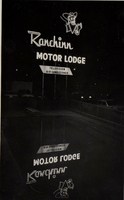
Ranch Inn Motor Lodge mounted pylon sign, Elko, Nevada: photographic print
Archival Collection
Description
View of the Ranch Inn Motor Lodge sign at night, the reflection is seen in the pool.
Image
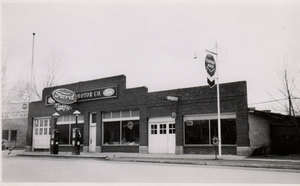
Ford Motor Co wall signs, Elko, Nevada: photographic print
Archival Collection
Description
View of the Ford Motor Co during the day.
Image

Elko Daily Free Press flag mounted wall sign, Elko, Nevada: photographic print
Archival Collection
Description
View of the Elko Daily Free Press sign with a stack of books piled high in the foreground with two men standing in comparison to the height during the day.
Image
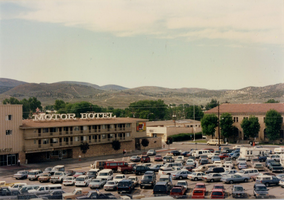
Motor Hotel roof mounted sign, Elko, Nevada: photographic print
Archival Collection
Description
View of the Motor Hotel during the day.
Image
